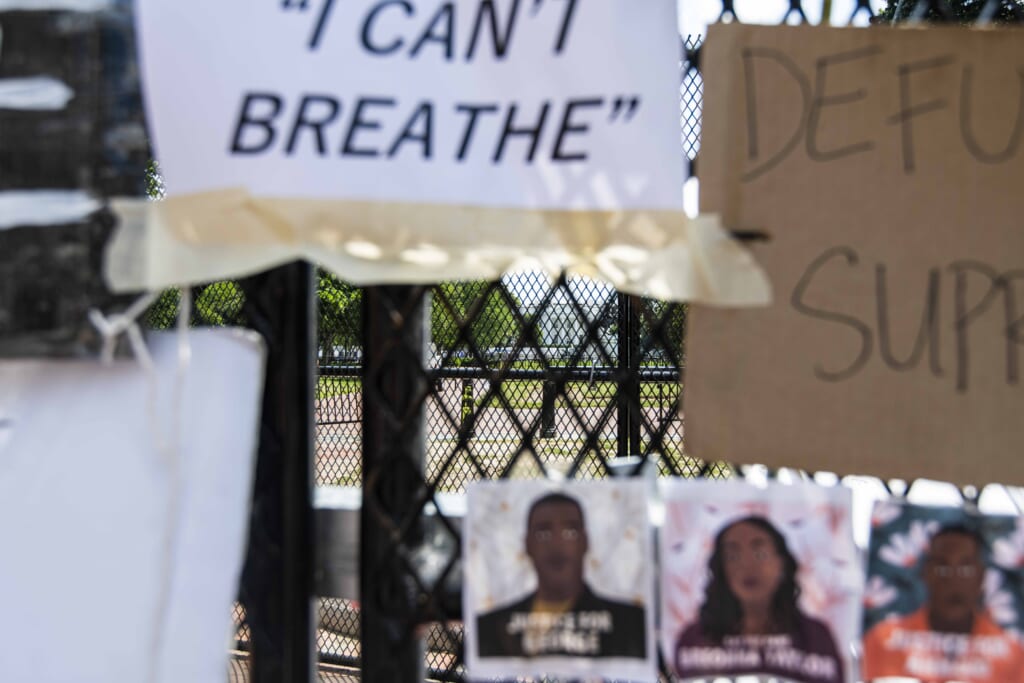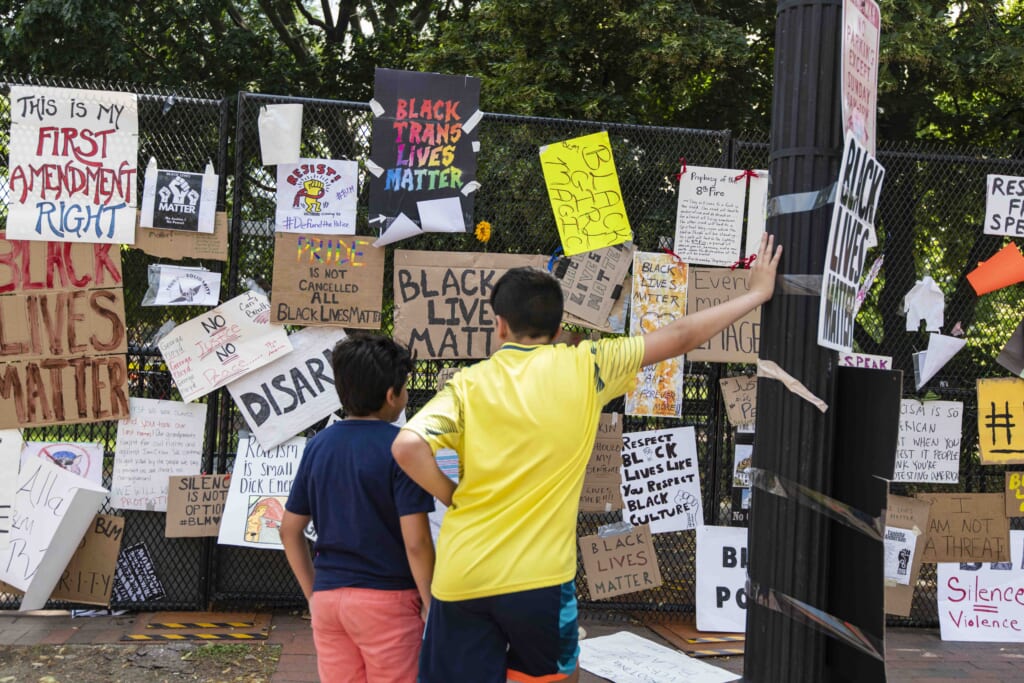Black Lives Matter protest artifacts scanned, saved for D.C. library
Artifacts include the names of 373 individuals – the majority of whom were victims of police brutality – and more than a dozen languages, including Arabic, German, French, Haitian Creole, Russian and Spanish.
Thanks to the combined efforts of several people and groups passionate about preserving history, 1,602 Black Lives Matter protest artifacts were scanned, archived and made available in an online collection of the D.C. Public Library.
According to The Washington Post, the artifacts that were once on display in front of Lafayette Park, across from the White House, can now be viewed on Dig D.C., the D.C. Public Library’s online archive. The pieces were components of a Black Lives Matter Fence that was on display from June 2020 to January 2021. The newly released online archive offers the most thorough examination of how the fence evolved into a gallery of resistance art, capturing the sadness and rage felt by the thousands of people who protested in D.C. against racism and police brutality.
Several “Black Lives Matter” statements on posters, a shield, face masks and pictures of people killed by police were among the artifacts. There was also artwork that called on leaders to cancel rent and safeguard democracy, as well as some decrying the Proud Boys, a violent far-right group.

They include the names of 373 individuals – the majority of whom were victims of police brutality – and more than a dozen languages, including Arabic, German, French, Haitian Creole, Russian and Spanish.
“The fence was the outlet for Black people to feel their anger, their frustration, their love, their aspirations for us as a people, for when finally people would see us with some humanity,” said Nadine Seiler, according to The Post. She played a leading role in the archival effort.
Seiler became the fence’s self-appointed curator and keeper and began organizing the items into categories. For larger pieces, she built stronger foundations, covered some in plastic coatings for protection and strengthened others using duct tape and zip ties.
To prevent the images from being destroyed or torn down, Seiler and fellow activist Karen Irwin also held a vigil next to the memorial fence for three months starting in late October 2020. The artwork remained on display until January 2021, when Seiler and other social justice activists removed each piece of art while taking thorough photographs and notes of the fence panels for a future archive.
Seiler eventually spent several hours in a 5-by-10-foot storage space organizing and selecting pieces of art to drive in batches to Baltimore, where archivists with the Enoch Pratt Free Library digitized them using a specialized art scanner to capture materials in their raw form. She worked with other individuals to write descriptions for each item once the archivists provided digital copies to the D.C. Public Library.
According to Seiler, the collection demonstrates how protesters came together to grieve, celebrate, and build a community despite opposition and tyranny.
“I was more drawn to the humorous protest signs,” Seiler said, according to My Modern Met. “I guess it’s the vein of, ‘If I don’t laugh, I’ll cry.’ For me, it’s taking tragedy of our dehumanization and lightening it so it’s not so heavy on my psyche.”
The Post reported that Marcus Gould, 45, was motivated to join the campaign after he accompanied his son, 11, to protest George Floyd’s killing by police and call for an end to racism with the other thousands of protesters. Later, the New Jersey native returned with a banner showing his own take of the Monopoly “go to jail” card.

In his version, the Monopoly Man was Black, wielding the club as a policeman dragged him away. “You Kill Go StR8 2 Jail” was written next to the picture.
Gould was content at the time to be part of the movement, believing that the authorities would eventually throw everything away. He was unaware that he would be able to continue to see his work in the library.
“There was no way I thought it would still be in existence,” said Gould, The Post reported. “It’s just an amazing feeling that people are going to be able to interact with it, share it, put it on their screen savers or something. It’s out there for the world to enjoy.”
Seiler hopes that viewers of the collection will recognize their “Black Lives Matter” voices and be motivated to continue advocating for social and racial justice. She said the next step is to find a location for the physical artwork to be displayed.
“I would like the community, the D.C. community, the people who put it there, the people who protected it, the people who created it, to be part of it,” said Seiler, according to The Post. “I don’t want it to be put away in an air-conditioned room and not be seen again. I want people to be able to see it.”
The D.C. Public Library collaborated with numerous organizations to create the collection, including the Library of Congress, which is the oldest government cultural institution in the capital city.
“History is happening all the time, and this is a really great example of people recognizing it in the moment,” Aliza Leventhal, an archivist with the Library of Congress, told The Post.
TheGrio is FREE on your TV via Apple TV, Amazon Fire, Roku and Android TV. Also, please download theGrio mobile apps today!


